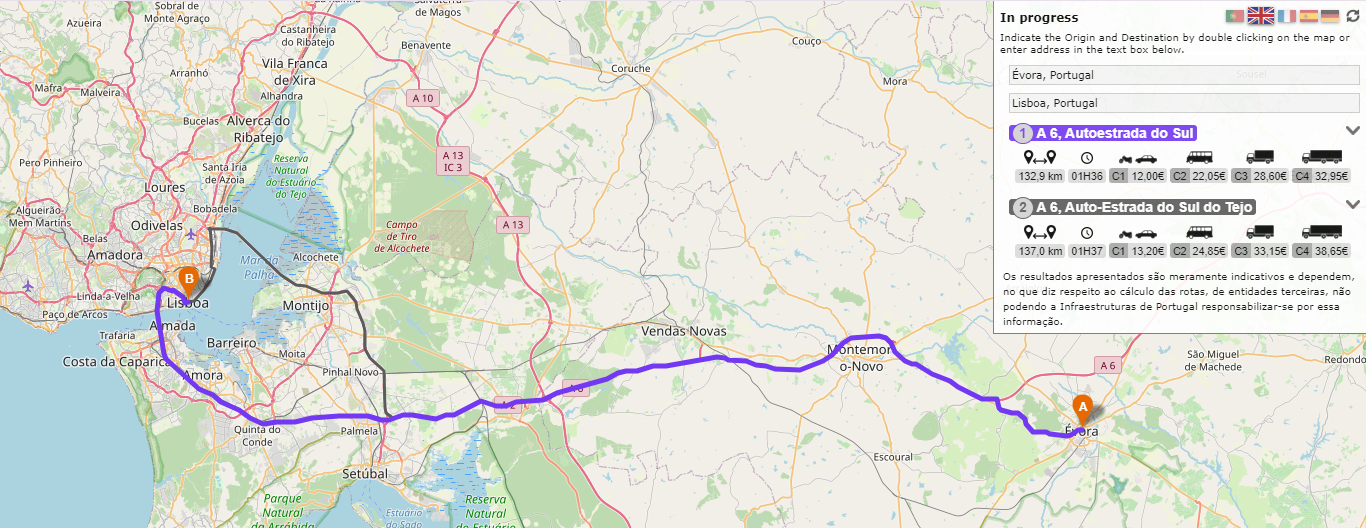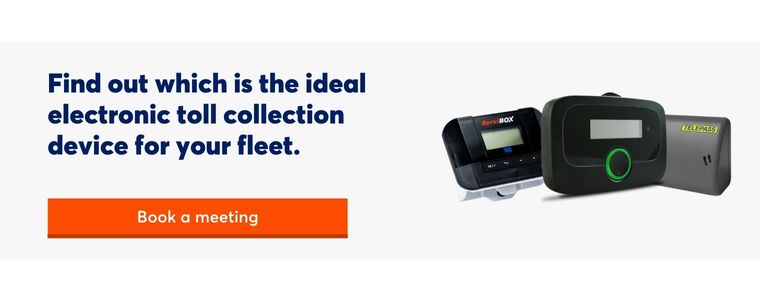Portugal, a country with an extensive network of roads and highways, has a toll system that may be unknown to many drivers. In this comprehensive guide, we will explore how the toll system works in Portugal , the applicable rates, and some practical tips for navigating the country’s roads with ease.
Current context of the toll system in Portugal: why are they important?
Tolls play a fundamental role in the development and maintenance of road infrastructure in Portugal, which affects both the country and its citizens. Its importance is evident in several aspects that we will explain below:
Road infrastructure financing
Tolls represent a significant source of financing for the construction, maintenance and improvement of road infrastructure in Portugal. This funding is crucial to ensure that roads are in good condition, safe and meet the quality standards necessary to meet the needs of users and support the country’s economic development.
Investment in modernization and development
The income generated by tolls is used for the modernization and continuous development of the road and motorway network in Portugal. This investment enables the implementation of advanced technologies, such as intelligent traffic management systems, as well as the improvement of infrastructure to adapt to the demands of an ever-changing society.
Promotion of competitiveness and connectivity
Well-maintained and modernized roads promote Portugal’s competitiveness as a country by facilitating the transport of goods and people , as well as improving connectivity between regions and cities . An efficient and well-developed road network is crucial for the economic growth and sustainable development of Portugal, allowing access to new markets and business opportunities.
Traffic management and congestion reduction
Tolls can be used as a tool to manage traffic and reduce congestion on roads. By implementing differentiated pricing systems depending on the time of day or the level of congestion, a more equitable distribution of traffic can be encouraged and traffic flow improved, which in turn contributes to reducing travel times and improving traffic safety driving experience.
Commitment to environmental sustainability
Part of the funds raised through tolls are invested in projects that promote environmental sustainability , such as improving public transportation, promoting low-emission vehicles, and conserving the environment in areas near roads. This commitment to sustainability is essential to mitigate the negative impacts of transport on the environment and ensure long-term sustainable development.
Types of tolls in Portugal
In Portugal, there are several types of tolls that are applied on different types of roads and situations.
Tolls on highways and highways
In Portugal, motorways and expressways are fundamental components of the country’s transportation network, and many of these roads are subject to tolls to finance their construction, maintenance and improvement. Within these highways and highways, there are two main types of tolls: tolls with barriers and electronic or barrier-free tolls.
Payment of these tolls is mandatory for non-Portuguese vehicles in advance, with an electronic toll device or credit card. In addition to the payment, it is also necessary to register any vehicle that comes from abroad.
Toll with barriers
Barrier tolling is a traditional method in which drivers must stop at toll booths to pay the corresponding amount before continuing their trip. This type of toll usually has the following characteristics:
- Toll booths: Toll booths are located on highways and highways that use this system, where drivers must stop to pay in cash, card or other accepted means of payment.
- Physical barriers: To control access to the road, physical barriers are used that prevent the passage of vehicles until the toll payment is completed.
- Station staff: At some toll booths, there may be staff responsible for collecting tolls and providing assistance to drivers.
This type of toll may be convenient for those drivers who prefer to pay on the spot and who do not have electronic automatic payment devices.
Electronic or barrier-free toll
Electronic tolling, also known as barrier-free tolling, is a more modern and efficient modality that allows automatic payment of tolls without the need to stop at toll booths. Some characteristics of this type of toll are:
- Electronic devices: Drivers can install electronic devices in their vehicles, such as the Vía Verde system, which automatically communicate with the equipment installed in toll stations when passing through them.
- Automatic payment: With electronic tolling, payment is made automatically when passing through toll stations, allowing for greater traffic flow and reducing waiting times.
- License plate charging: In the absence of electronic devices, some highways and highways in Portugal use license plate charging systems, where the vehicle’s license plate is recorded when passing through toll stations and the invoice is subsequently sent to the vehicle owner.
Electronic tolling is a convenient option for drivers who prefer to avoid waiting at toll booths and want a smoother, more efficient driving experience. In addition, it contributes to the reduction of congestion on the roads and improves road safety.
In Portugal, there are some highways where the toll is collected only electronically, and these are identified with the blue sign “ electronic toll only ”. On these highways, previously called SCUT, you can only pay with an On-Board Unit. They are the following:
- A 4: Matosinhos – Águas Santas – Amarante – Vila Real – Bragança
- A 8: Lisbon – Caldas da Rainha – Leiria
- A 13: Almeirim – Benavente – Santarém
- A 17: Marinha Grande – Figueira da Foz – Mira – Aveiro
- A 19: Leiria (north) – Leiria (south)
- A 22: Lagos – Faro – Vila Real de Santo António (Algarve)
- The 23: Torres Novas – Castelo Branco – Covilhã – Guarda
- A 24: Viseu – Vila Verde da Raia
- A 25: Aveiro – Viseu – Guarda – Vilar Formoso
- A 27: Viana do Castelo – Ponte de Lima
- A 28: Porto – Póvoa de Varzim – Viana do Castelo – Valença
- A 29: Aveiro – Espinho – Vila Nova de Gaia
Urban toll on regional and local roads
In urban areas and cities, some regional and local roads may be subject to tolls, especially on sections such as bridges, tunnels or restricted access areas. These tolls can vary in their payment method and can also be electronic, manual or virtual, depending on the infrastructure available in each area.
You may also be interested in: Complete guide to tolls in Spain
Other types of tolls
In addition to conventional tolls on highways and urban roads, Portugal also has other types of tolls that are applied in specific situations:
- Bridge and tunnel tolls: Some bridges and tunnels may be subject to tolls to cover the costs of maintaining and operating these structures.
- Tolls on ferries: On routes that include river crossings or sea crossings, it is possible to find tolls on the ferries that provide the transport service.
- Tolls in restricted access areas: In some cities, there are restricted access zones where tolls or congestion charges are applied to control traffic and improve air quality in the urban area.
These are the main types of tolls found in Portugal, each with its own specific characteristics and requirements depending on the type of road and geographical location. It is important to be informed about the types of tolls before embarking on a road trip in the country to avoid surprises and facilitate trip planning.
Toll rates and payment methods in Portugal
The toll system in Portugal varies depending on the type of vehicle and the road used, and understanding the rates and payment methods is essential when planning a road trip in the country. Below are the truck toll rates and the different payment methods available in Portugal.
Toll rates in Portugal for trucks
Toll rates in Portugal for trucks vary depending on several factors, such as the type of vehicle, the distance traveled and the type of road used. Some important points to keep in mind about truck toll rates are:
- Vehicle categories: In Portugal, trucks are classified into different categories depending on their size, weight and number of axles. Toll rates can vary by vehicle category, with higher rates for larger and heavier trucks.
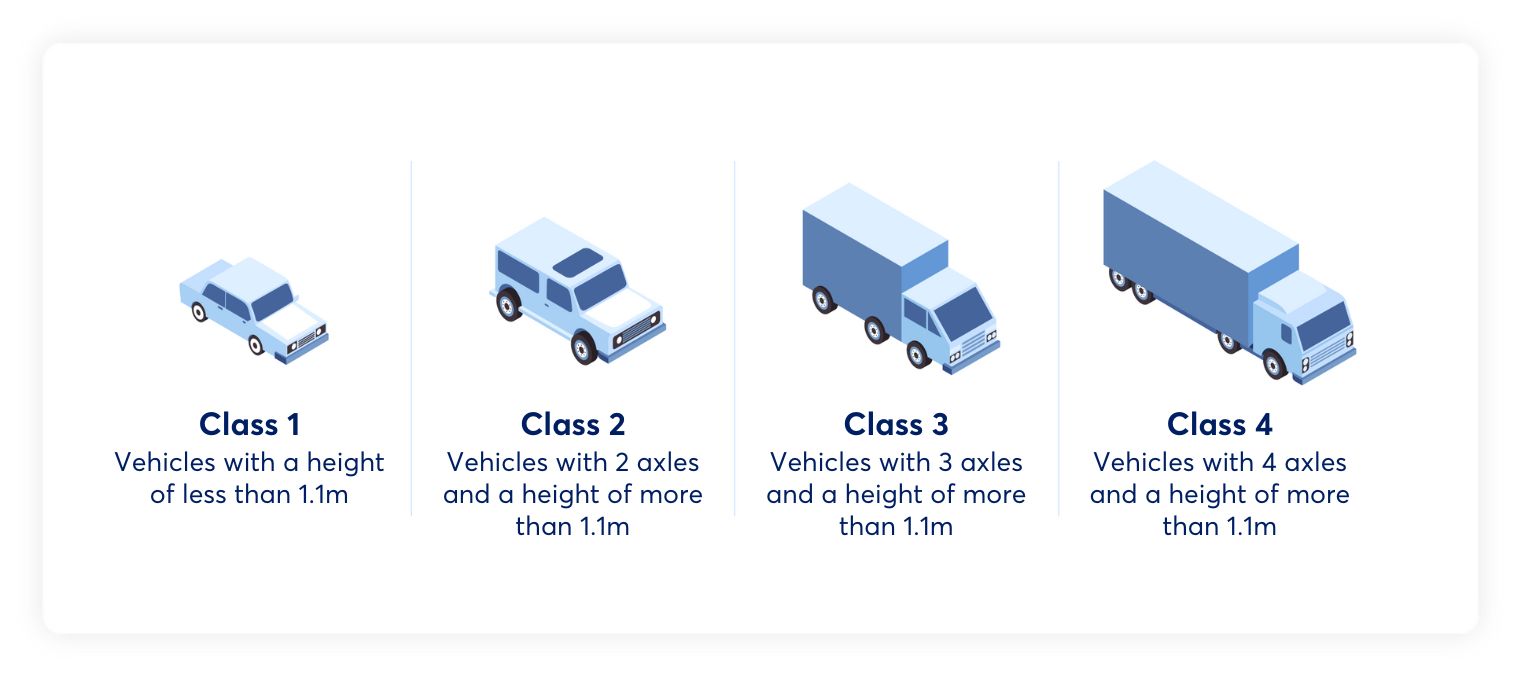
- Distance traveled: On some highways and expressways, toll rates are calculated based on distance traveled, meaning trucks will pay more to travel longer distances.
- Electronic tolls: Some highways in Portugal use exclusive electronic toll systems for trucks, which may offer preferential rates or discounts for vehicles using this payment method.
It is important for truck drivers to be familiar with the rates applicable to their type of vehicle and plan their routes with toll costs in mind.
To calculate the tolls in Portugal, that is, the total estimate of what you must pay during your trip, enter the toll calculator in Portugal and simulate your trip. There you can see the updated prices according to the type of vehicle.
How to pay tolls in Portugal
In Portugal, there are several payment methods available to pay tolls, giving drivers flexibility and allowing them to choose the option that is most convenient for them. Some common ways to pay tolls in Portugal are:
Electronic payment systems
- Green Way. This is the most used electronic payment system in Portugal. It consists of a device installed on the vehicle’s windshield that automatically communicates with the toll station equipment when passing through them, allowing automatic payment of the toll.
- Other electronic payment options. In addition to Via Verde, there are other electronic payment systems available in Portugal, such as TollCard, which offer alternatives to drivers who do not have access to Via Verde.
- Electronic toll devices for trucks. Professional drivers who travel on international routes usually opt for on-board units that allow them not only to pay tolls in Portugal, but also in different European countries. Toll4Europe and Servibox offer extensive coverage and make payment and billing easy. To find out more, you can read our article on European electronic tolling .
Toll motorway network in Portugal: Geographic coverage and key connections
The toll motorway network in Portugal covers practically the entire country, extending from north to south and from east to west. Some of the major highways that are part of this network include:
- A1: Known as the “Northern Highway”, it connects Lisbon with Porto, the two main cities of Portugal, passing through regions such as Santarém, Leiria and Aveiro.
- A2: This highway connects Lisbon with the Algarve, the famous tourist region in southern Portugal, passing through towns such as Setúbal, Sines and Faro.
- A3: It extends from Porto to the border with Spain, offering an important connection between Portugal and Galicia.
- A4: Connects Porto with the border with Spain, passing through cities such as Amarante, Vila Real and Bragança.
- A8: Known as the “Western Highway”, it connects Lisbon with Leiria and the beaches of the Costa de Prata.
These are just some of the most important highways in the toll network in Portugal, but there are many others that connect cities, regions and points of interest throughout the country.
In addition to providing extensive geographical coverage, toll roads in Portugal also offer key connections that facilitate travel both within the country and abroad. Some of these connections include:
- International connections: Portugal has several highways that connect with Spain, facilitating traffic between the two countries. In addition, the Portuguese motorway network also offers connections with France through the connection with the Spanish network.
- Access to ports and airports: Toll highways in Portugal provide direct access to the country’s main seaports, such as the Port of Lisbon and the Port of Leixões, as well as international airports, including Lisbon Airport and Lisbon Airport. Port.
- Links to tourist areas: Many toll roads in Portugal offer direct access to important tourist destinations, such as the beaches of the Algarve, the vineyards of the Douro Valley and the historic cities of central Portugal.
Practical tips for going through tolls in Portugal
Payment method optimization
To speed up your passage through the tolls in Portugal, we recommend installing an electronic toll device. With the unit on board, you will avoid waiting and you will be able to centralize all your payments in a single invoice.
In addition, the devices are especially useful for fleets that operate international routes, connecting two or more countries in Europe. In these cases, a single unit can facilitate payment for different services, without the need to have multiple vignettes or cards.
At Andamur, we have three devices, which are easily installed. You can choose the most suitable one for your case considering the number of vehicles, the type of route you take and the particular needs of the drivers.
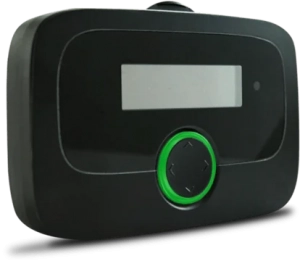
Toll4Europe
You can pay your tolls in Portugal but also in Spain, Italy, Austria, Poland, Denmark Storebælt Bridge, Sweden Øresund Bridge, Germany, Germany Warnowquerung Tunnel, Germany Herrentunnel Tunnel, Bulgaria, Switzerland, Belgium, Belgium Liefkenshoek Tunnel, Slovenia and Hungary. Other features are: possibility of activating and deactivating countries at no additional cost, activation and deactivation of services in 24/48 hours from the request, license plate change allowed and processed between 24 and 48 hours, device blocking allowed by client or by device with a processing time between 24 and 48, available in 22 languages, a free informative app available, standard delivery time between 3 and 5 days, easy installation.
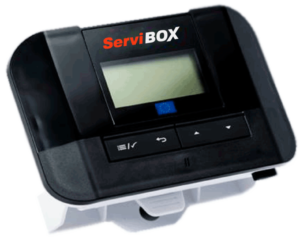
ServiBOX
Allows payments in Spain, Portugal, France, Belgian Tunnel, Belgium, Italy, Austria, A4 Poland (Katowice-Kraków), Poland (e-Toll Network), Denmark, Norway, Sweden, Switzerland, Germany and Bulgaria, it is satellite, easy and intuitive. In addition: it allows security and control over the fleet through the KMASTER management service, the possibility of activating or deactivating countries at no additional cost, available in 14 languages and has a delivery time of 5 business days.
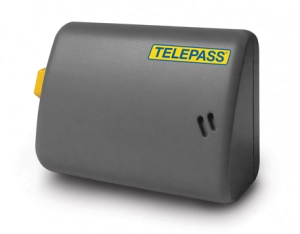
EU Interoperable
It is easy to install, has radio frequency technology and is available for Spain, Portugal, France, Italy, A4 Poland (Katowice-Kraków), Austria and the Belgian tunnel. The delivery time is 5 business days.
If you don’t know which device is right for your needs, contact us. Our team will help you evaluate your current situation and choose the best option.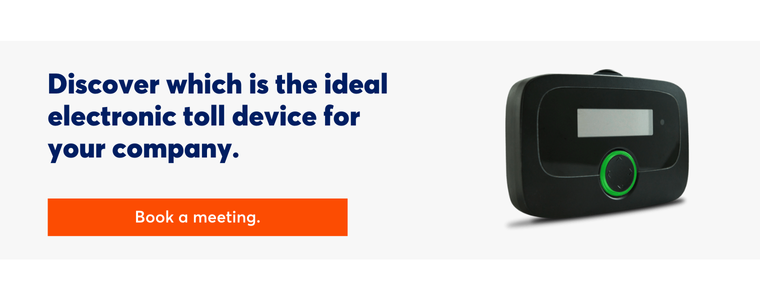
Considerations for foreign drivers
If you are a foreign driver in Portugal, there are some additional considerations you should keep in mind when going through tolls:
- Device Settings: If you have an electronic toll device, remember that – when entering a new country – you must activate the corresponding network. In addition, it is always advisable to check that the vehicle’s characteristics are correctly configured. Remember to check the registration, the number of axles and the weight.
- Consumption review: to avoid fines and ensure that payments are made correctly, when passing through the first toll in a new country, remember to check the consumption loaded on the device. In the most modern units this review can be done through a mobile application.
- VAT recovery: companies and private drivers with tax domicile in member countries of the European Union can recover VAT. In the country, the standard VAT rate amounts to 23%, but there are also products and services that apply at the reduced rate (13%) or the super-reduced rate (6%). Among the deductible expenses, tolls, diesel and lubricants stand out. To know more about this point, we invite you to read our article and consult the Tax Recovery Guide .
- Maximum speeds: vehicles weighing more than 3.5 tons must travel at a maximum of 90 km/h on non-urban roads, highways and expressways. It is important to consider that, in some sections, the limit is reduced to 80 km/h. On urban roads, the limit drops to 50 km/h.
Beyond these recommendations, if your fleet operates international routes it is always good to have a customer service that can resolve queries and inconveniences related to tolls. At Andamur, we have a multilingual team available 24 hours a day, seven days a week, to resolve any incident.


